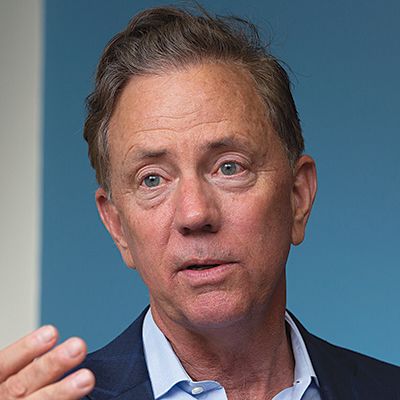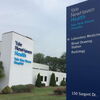Processing Your Payment
Please do not leave this page until complete. This can take a few moments.
-
News
-
Editions
-
- Lists
-
Viewpoints
-
HBJ Events
-
Event Info
- 2024 Economic Outlook Webinar Presented by: NBT Bank
- Best Places to Work in Connecticut 2024
- Top 25 Women In Business Awards 2024
- Connecticut's Family Business Awards 2024
- What's Your Story? A Small Business Giveaway 2024 Presented By: Torrington Savings Bank
- 40 Under Forty Awards 2024
- C-Suite and Lifetime Achievement Awards 2024
- Connecticut's Health Care Heroes Awards 2024
-
-
Business Calendar
-
Custom Content
- News
-
Editions
View Digital Editions
Biweekly Issues
- April 29, 2024
- April 15, 2024
- April 1, 2024
- March 18, 2024
- March 4, 2024
- February 19, 2024
- February 5, 2024
- January 22, 2024
- January 8, 2024
- + More
Special Editions
- Lists
- Viewpoints
-
HBJ Events
Event Info
- View all Events
- 2024 Economic Outlook Webinar Presented by: NBT Bank
- Best Places to Work in Connecticut 2024
- Top 25 Women In Business Awards 2024
- Connecticut's Family Business Awards 2024
- What's Your Story? A Small Business Giveaway 2024 Presented By: Torrington Savings Bank
- 40 Under Forty Awards 2024
- C-Suite and Lifetime Achievement Awards 2024
- Connecticut's Health Care Heroes Awards 2024
Award Honorees
- Business Calendar
- Custom Content
Lamont tasks a yet-unnamed panel with choosing who first gets COVID vaccine in CT
 Gov. Ned Lamont
Gov. Ned Lamont
A panel of 15-20 individuals not yet appointed by Gov. Ned Lamont will help make one of the toughest decisions facing the governor this fall: Who in Connecticut will receive priority when a COVID-19 vaccine is finally available.
The governor has not announced the members of his COVID-19 Vaccine Advisory Group, co-chaired by Deidre Gifford, the commissioner of the Connecticut departments of public health and social services; and Reginald Eadie, CEO of Trinity Health. The state has until Oct. 16 to submit a distribution plan to the Centers for Disease Control and Prevention.
Although the advisory group will consider the weightier issues associated with vaccine distribution, the plan submitted to the CDC will be limited to identifying where in Connecticut the vaccine will be distributed, a list that could include hospitals, health centers, pharmacies and doctor’s offices.
The DPH has been working on the plan for weeks, with the help of a paid consultant, All Clear, a management company that Lamont spokesman Max Reiss said has worked before with the state and is “familiar with the agency’s” emergency response plans.
He said he does not know “the precise fee” that will be paid to All Clear.
Although the vaccine panel’s members have not yet been announced, Gifford said she hopes the advisory group will hold a meeting before the Oct. 16 deadline so it has an opportunity to look at that plan.
Reiss on Tuesday said “the rest of the panel has not been named, but we expect that announcement to be made in the coming days.”
A COVID-19 vaccine has not yet been approved by the Food and Drug Administration and Drug Administration, although four pharmaceutical companies — Pfizer, Astra-Zeneca, Moderna and Johnson & Johnson — are in the final stages of their clinical trials and one or more vaccines could be approved for use by the end of the year.
The Trump administration’s “Operation Warp Speed” plan aims to rush any vaccine that is deemed safe and effective – the guideline for effectiveness is a vaccine that prevents a COVID infection at least 50% of the time — to the states as soon as possible, perhaps with the help of the military. It has pressed the states for their distribution plans and provided about $200 million in grants for this purpose. Connecticut received a $2.4 million grant, money that will be used to pay All Clear.
Before the vaccine can be distributed, however, the states must decide who is first-in-line to be inoculated.
Initial supplies of the vaccine will be scarce, distributed to states based on population and a few other factors.
“Depending upon the amount of vaccines that we get as a state, we need to take the first tranche of that and distribute it in a transparent manner and absolutely in a safe manner. And what’s important is an equitable manner,” Eadie said.
He said the advisory group will follow the guidelines set by the CDC’s Advisory Committee on Immunization Practices (ACIP), but may have to modify those recommendations.
The group, which plans to form three subcommittees, “will prioritize, as you can imagine, based on risks; so first responders, the elderly, the vulnerable communities or populations,” Eadie said.
Gifford said “one of the reasons why the governor wanted to have this advisory group is that we anticipate that even within those broad categories (established by the federal government) we’ll have to make some local decisions.”
“And so that’s one of the main things that we’ll be talking about is – Who’s at highest risk? Where does it make the most scientific sense to start the vaccine process? And how are we going to implement that?” Gifford said. “It’s really important to us that the public understands how and why these decisions are being made.”
“If it turns out, as it probably will, that there are not going to be enough vaccines for everybody on day one, we’re going to have to have some strategy for distribution and administration of the vaccine. And we don’t want people to suspect that somebody got a special favor in that process,” she said.
Gifford said the goal of a vaccine is to protect both individuals and “the population as a whole.”
“So, you want to be looking at both of those things and strike a balance. … People will undoubtedly disagree, but making sure that that process is transparent is important,” she said.
Watching for ‘morbidity and mortality’
Meanwhile, the CDC has reached out to the National Academies of Sciences, Engineering, and Medicine and the National Academy of Medicine for help in determining who should be first in line for a COVID-19 vaccine.
Last month, those organizations released a draft proposal that recommended the vaccine be distributed in four phases, with health care workers and vulnerable Americans, including the elderly and those with underlying health conditions, going to the front of the line. Those in the first phase of the distribution plan would account for about 15% of the population, the draft report said.
Phase two would include essential workers, teachers, residents of homeless shelters, and those living in prisons, jails and detention centers. All older adults not included in phase one would be vaccinated in phase two.
Phase three would include young adults, children and workers in industries “essential to the functioning of society” and who are at risk of exposure to the virus. About 85% to 95% of the country would be vaccinated by the end of phase three, the report said. Phase four would include everyone not covered in the previous phases.
Eadie said Connecticut’s COVID-19 Vaccine Advisory Group will work through most of next year. After it creates a distribution plan, it has to implement that plan, Eadie said. Then the panel will oversee “what is happening, because administering a vaccine, we have to make sure it goes without any symptomatology.”
“We can’t afford to have any morbidity or mortality associated with the vaccine,” he said.
The panel will have three subcommittees. One will focus on the safety of the federal approval process and science behind the vaccine, Reiss said, while another will advise the governor on how to distribute and allocate the vaccine. The third panel will determine “which messages need to be received,” Reiss said. That would involve advertising and marketing.
Eadie said “there’s a lot of controversy being played out nationally in the media, within the scientific space and outside of it.”
“And so we have to bring all that into the conversation and communicate the decisions that come from the distribution subcommittee and the scientific subcommittee,” he said.

2022 Giving Guide
This special edition informs and connects businesses with nonprofit organizations that are aligned with what they care about. Each nonprofit profile provides a crisp snapshot of the organization’s mission, goals, area of service, giving and volunteer opportunities and board leadership.
Learn more
Subscribe
Hartford Business Journal provides the top coverage of news, trends, data, politics and personalities of the area’s business community. Get the news and information you need from the award-winning writers at HBJ. Don’t miss out - subscribe today.
Subscribe
2024 Book of Lists
Delivering Vital Marketplace Content and Context to Senior Decision Makers Throughout Greater Hartford and the State ... All Year Long!
Read Here-
2022 Giving Guide
This special edition informs and connects businesses with nonprofit organizations that are aligned with what they care about. Each nonprofit profile provides a crisp snapshot of the organization’s mission, goals, area of service, giving and volunteer opportunities and board leadership.
-
Subscribe
Hartford Business Journal provides the top coverage of news, trends, data, politics and personalities of the area’s business community. Get the news and information you need from the award-winning writers at HBJ. Don’t miss out - subscribe today.
-
2024 Book of Lists
Delivering Vital Marketplace Content and Context to Senior Decision Makers Throughout Greater Hartford and the State ... All Year Long!
ABOUT
ADVERTISE
NEW ENGLAND BUSINESS MEDIA SITES
No articles left
Get access now
In order to use this feature, we need some information from you. You can also login or register for a free account.
By clicking submit you are agreeing to our cookie usage and Privacy Policy
Already have an account? Login
Already have an account? Login
Want to create an account? Register
Get access now
In order to use this feature, we need some information from you. You can also login or register for a free account.
By clicking submit you are agreeing to our cookie usage and Privacy Policy
Already have an account? Login
Already have an account? Login
Want to create an account? Register






0 Comments